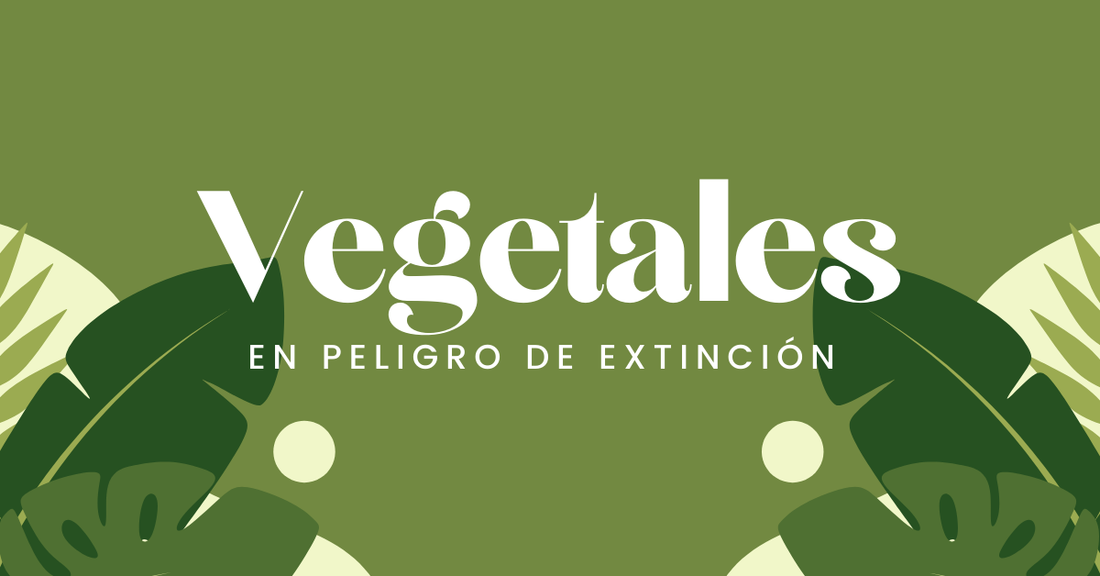The situation of endangered plants is alarming. Their disappearance can have ripple effects that affect not only local ecosystems but also food availability and the genetic diversity of crops. In this article, we'll break down the main threats facing these plants, some significant examples, and how you can contribute to their conservation.
Main Causes
Habitat Loss
One of the main causes of plant extinction is habitat loss . Urban expansion, deforestation, and land conversion for agriculture have significantly reduced the natural areas where these plants can grow. Without adequate habitat, many plant species cannot thrive and face the risk of extinction.
Habitat loss also impacts ecological relationships essential to plant survival. For example, many plants depend on specific pollinators, which are also affected by habitat destruction. Preserving natural habitats is crucial to ensuring the survival of these endangered plants.
Climate Change
Climate change is altering the conditions in which plants grow. Changes in temperature, rainfall, and extreme weather events can affect plant development and reproduction. Prolonged droughts, floods, and extreme temperatures can make conditions inhospitable for many species.
Furthermore, climate change can lead to the proliferation of pests and diseases that affect plants. Plants that cannot quickly adapt to these changes face a greater risk of extinction. Climate change adaptation and mitigation are essential to protecting these plants.
Human Activities
Human activities have a significant impact on plant survival. Air and water pollution can affect the health of plants and their ecosystems. Invasive species, introduced accidentally or intentionally by humans, can compete with native plants for resources and space, reducing their chances of survival.
Furthermore, overexploitation of plants for commercial uses, such as overharvesting for traditional medicine or trade, can also threaten their existence. The regulation and sustainable management of natural resources are essential to ensuring the survival of these species.
Examples of Plants in Danger of Extinction
Carolina Ginseng
Carolina ginseng is a medicinal plant native to North America that faces threats due to overharvesting and habitat loss. This plant is valued for its properties in traditional medicine, but overharvesting has led to a significant decline in its populations in the wild.

Carolina ginseng conservation includes protecting its natural habitats and implementing regulations to control its harvest. It is also important to promote sustainable cultivation of this plant to reduce pressure on wild populations.
Oregon Cress
Oregon watercress is an aquatic plant endemic to the wetlands of the northwestern United States. This species is endangered due to wetland destruction and water pollution. The loss of its essential aquatic habitats is seriously impacting its survival.

Oregon watercress conservation involves restoring wetlands and reducing water pollution. Conservation efforts also focus on protecting the natural areas where this plant grows and promoting sustainable practices that minimize human impact on these ecosystems.
How to Contribute to Plant Conservation
Support Conservation Initiatives
An effective way to help endangered plants is to support conservation initiatives. There are organizations and programs dedicated to protecting these plants and their habitats. You can make a difference by donating, volunteering, or participating in fundraising events.
These organizations work on habitat restoration, breeding and reintroduction programs, and promoting sustainable practices. Your support can help fund crucial conservation projects and ensure the protection of these species.
Promote Education and Awareness
Education and awareness are key to the conservation of endangered plants. Informing others about the threats these plants face and the importance of preserving them can generate greater support for conservation initiatives. Participating in educational campaigns, sharing information on social media, and organizing community events are effective ways to promote the cause.
Education also plays a role in promoting sustainable and responsible practices in agriculture and the use of natural resources, which can contribute to the protection of endangered plants.
Choosing Sustainable Products
Choosing sustainable products can help protect endangered plants. By choosing responsibly grown products and avoiding purchasing rare species from unverified sources, you can support the conservation of these species.
Also, consider supporting companies that practice sustainable agriculture and local habitat restoration initiatives. Conscious product and service choices can reduce the negative impact on ecosystems and help preserve endangered plant species.
What does it mean for a plant to be in danger of extinction?
When a plant is endangered, its population in the wild is declining and it faces a high risk of disappearing. This can be caused by factors such as habitat loss, climate change, pollution, or overexploitation.
How are endangered plants identified?
Endangered plants are identified and classified by organizations such as the International Union for Conservation of Nature (IUCN) and other specialized conservation entities. These organizations maintain lists of endangered species and provide information on their conservation status and the threats they face.
What organizations work on the conservation of endangered plants?
There are several organizations dedicated to plant conservation, such as Botanic Gardens Conservation International (BGCI), the IUCN, and local NGOs. These organizations work on projects to protect habitats, restore ecosystems, and promote sustainable practices.
How can I get involved in endangered plant conservation?
You can get involved by supporting organizations and projects dedicated to plant conservation. Consider making donations, participating in fundraising events, educating others about the importance of conservation, and adopting sustainable practices in your daily life.







